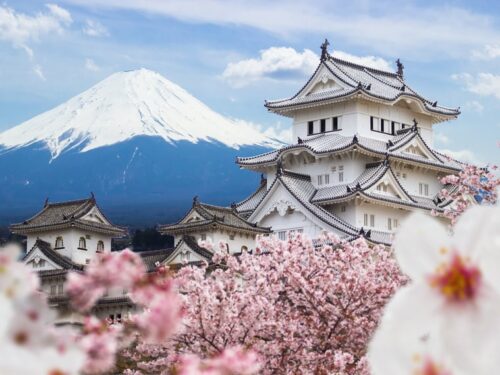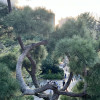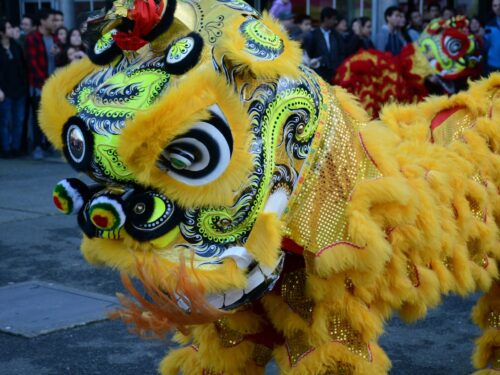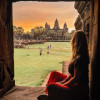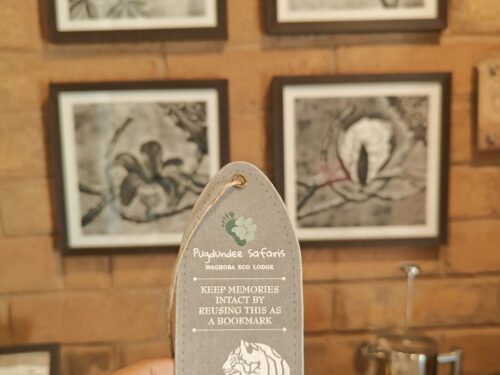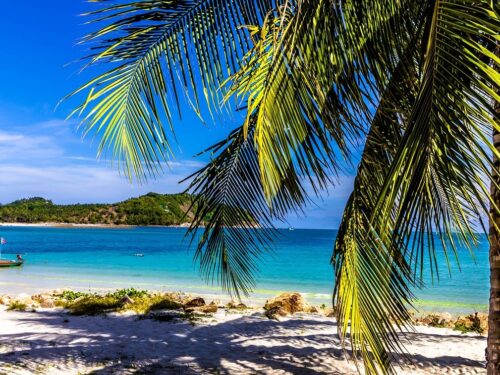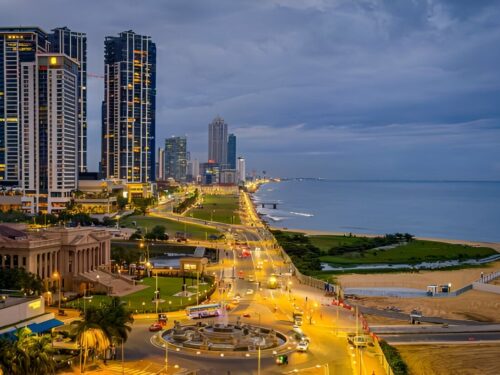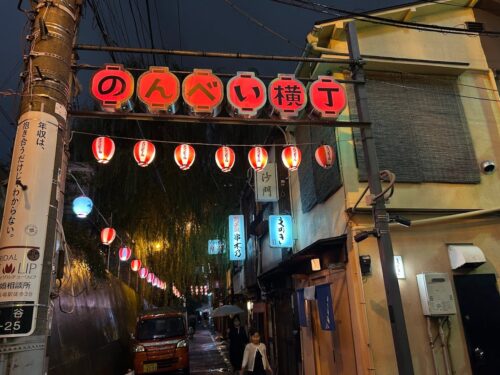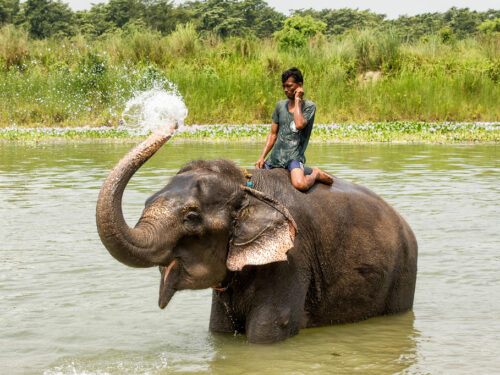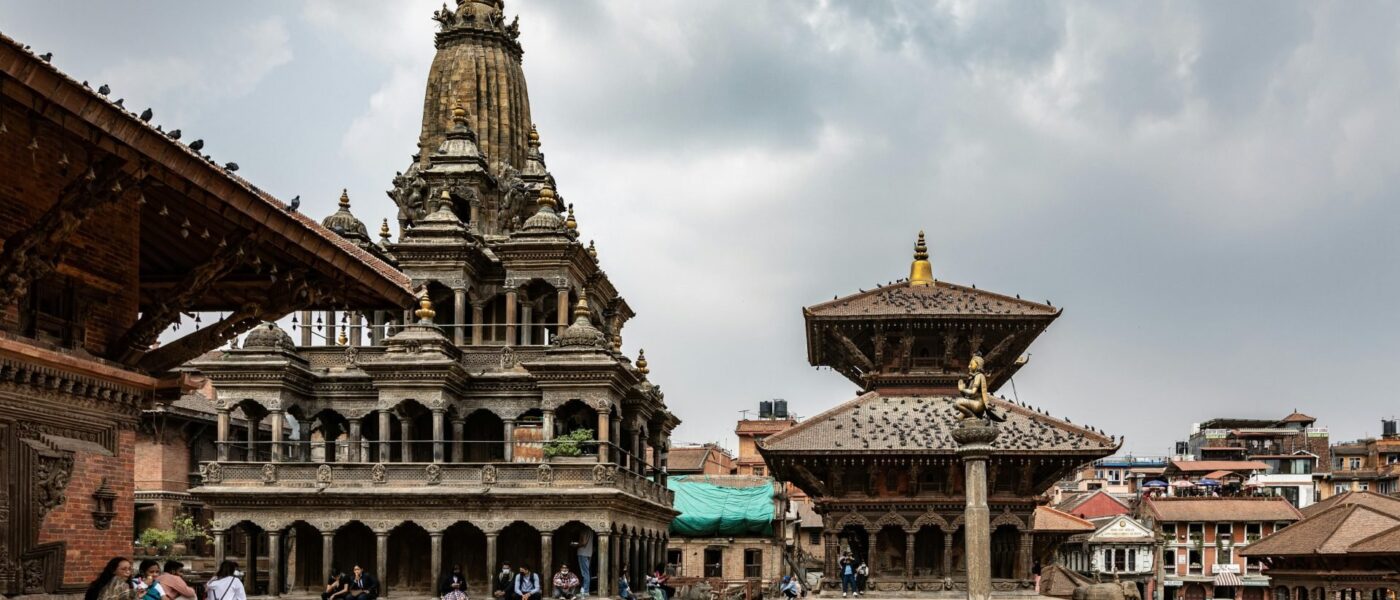

Nepal, a small landlocked kingdom nestled in the midst of the delightful Himalayas, tempts travelers with its exhilarating scenery, rich culture, and spiritual significance.
Two weeks in Nepal offer ample time to explore its wonders, but planning is crucial to maximizing your experience.
Nepali people are acclaimed for their warmth and hospitality, with their charming, appealing smiles and genuine kindness, which will leave an enduring impression on your journey.
Here’s our guide to planning the perfect itinerary for two weeks in Nepal.
Here’s an overview:

When is the Best Time to Visit Nepal?
- If you are planning to visit Nepal, especially for the Everest Base Camp Trek, the best time to visit is during the pre-monsoon season (March to May) or post-monsoon season (late September to December). During these seasons, you’ll spot breathtaking scenes of the Himalayas. Usually, the weather is also clear and the temperatures are moderate, which makes it ideal for trekking.
- Monsoon season (June to early September) in Nepal is usually unsuitable for visiting most places because of the heavy rainfall. Due to the heavy rainfall, there are natural calamities like flooding and landslides, which will not be favorable for outdoor activities like trekking, and hiking but there are plenty of destinations not affected by the rainy season.
- If you are planning to visit Nepal particularly for trekking, the best seasons would be spring (late February to mid-May) and autumn (September to December). During these seasons you can get to spot the breathtaking views of the Himalayas, clear skies, and dry and sunny weather.
- If you are planning to visit Nepal for sightseeing, exploring Nepali culture, and religious sites, any other time of the year would be suitable, except for the monsoon season (June to August). Having said that in the spring and autumn seasons, you will get to enjoy the best weather for sightseeing.
- If you are planning to visit Nepal curiously to encounter some of Nepal’s popular festivals like Dashain (it is the biggest festival of the year which is celebrated in September or October), Tihar (it is the festival lights which is celebrated in November), and Holi (it is the festival of colors which is celebrated in February or March). As Nepal is a country rich in culture and festivals, you will get to encounter festivals throughout the year.
- In addition, the winter season (December to February) is cold, especially at higher altitudes but trekking is still possible yet can be more challenging where the crowds are fewer during this time.
How to Tailor your Trip to Nepal
To create an itinerary that captures the best of Nepal, start by customizing your trip according to your interests.
If you’re an adventure seeker, you might be drawn to treks like Everest Base Camp (EBC) or Annapurna Base Camp (ABC). For those interested in culture, consider the Heritage Cities tour package offered by Voyageons Nepal, which includes visits to Kathmandu, Patan, Palpa, Panauti, Pokhara, and the historical site of Lumbini, the birthplace of Buddha.
Wildlife enthusiasts can fulfill their dreams of encountering one-horned rhinos at Chitwan National Park.
First and foremost, identify your priorities to tailor a personalized itinerary that suits your passions.

Next, decide whether you want to include trekking in your itinerary.
Trekking in Nepal is a quintessential experience, and making this choice can be challenging. For a two-week trek, consider popular options like Annapurna Base Camp, Poon Hill, Langtang Valley, Upper Mustang, and Mardi Himal, which offer stunning Himalayan views and deeper connections to the mountains.
If trekking isn’t your thing, there’s still plenty to explore.
With your preferences and interests now clear, here’s a sample itinerary that blends culture, adventure, and relaxation.
Possible Two Weeks in Nepal Itinerary: Culture, Adventure & Relaxation
Day 1-3: Kathmandu Valley
Kathmandu, the capital city of Nepal, is a vibrant urban sprawl where tradition and modernity strike one another.
Explore the labyrinthine alleys of Thamel, the tourist hub, jamming with shops selling souvenirs, trekking gear, and handicrafts. Pay your respects at the privileged Pashupatinath Temple, a UNESCO World Heritage Site and one of the most significant Hindu pilgrimage sites in the world.
It also offers you adventures beyond city life. You can Hike up Phulchowki Hill, the highest hill in the valley, for a breathtaking Himalayan panorama. Swayambhunath which is also known as the Monkey Temple, is a very old religious site, has an iconic stupa, temples & many shrines.

Day 4: Pokhara
Pokhara is a destination that has something to offer everyone. Whether you’re looking for adventure, culture, relaxation, or simply a beautiful place to escape the hustle and bustle of everyday life, Pokhara is the perfect place to visit.
The Phewa, the heart of Pokhara is a tranquil lake surrounded by flourishing mountains. You can enjoy boating on the lake, enjoying the views of the magnificent Annapurna range, or simply relaxing on the shore.
Paragliding is a popular activity here, which offers you breathtaking views of the Himalayas as you soar through the air. You can also go trekking in the Annapurna region, white-water rafting on the Trishuli River, or mountain biking through the scenic countryside.
World Peace Pagoda is located on a hilltop overlooking the Phewa Tal, also known as the Shanti Stupa is a Buddhist monument that offers panoramic views of the city and the surrounding mountains. If you want to adore breathtaking sunrise views over the Annapurna mountain range then you can head to Sarangkot.
Days 5-8: Trekking Adventure (Optional)
Nepal offers a wide range of trekking options, from gentle walks through foothills to challenging expeditions to Everest Base Camp. If you feel like challenging yourself for an adventure then trekking in Nepal is the perfect option for you. Some of the popular trekking destinations are The Everest Base Camp Trek, The Annapurna Circuit Trek, The Langtang Valley Trek and The Poon Hill Trek.
Day 5-8: Pokhara to Lumbini (If You Don’t Go Trekking)
Just imagine stepping onto the very ground where the Buddha himself took his first steps.
Lumbini, nestled in the Rupandehi district of Nepal, is a haven for spiritual seekers and history devotees. It offers a peaceful aura perfect for meditation, reflection, and spiritual renewal.
Days 9-10: Chitwan National Park
With its diverse wildlife, stunning scenery, and exciting activities, Chitwan National Park attracts all nature lovers. Its breathtaking landscapes, diverse wildlife, and cultural experiences are unforgettable experiences for visitors.
You can enjoy activities like jeep safaris, elephant safaris, bird watching, and cultural village tours sailing down the Rapti River in Chitwan National Park.
If you get lucky enough you could get a chance to witness one-horned rhinoceros.

Days 11-12: Kathmandu
Return to the capital for souvenir shopping, exploring hidden gems like Patan which is known for its elegant craftsmanship and traditional Newari architecture, while Bhaktapur, the “Living Heritage City” is a car-free zone steeped in history with ancient temples and squares.
Logistics for Two Weeks in Nepal
- You’ll need a visa to enter Nepal. You can obtain a Tourist Visa on Arrival at Tribhuvan International Airport (TIA) in Kathmandu or any other entry point.
- Tribhuvan International Airport (TIA) in Kathmandu is the main international gateway to Nepal.
- You can exchange your currency for NPR at the airport, banks, or money changers.
- Buses are a budget-friendly option for getting around Nepal. Tourist buses offer a more comfortable experience than local buses. Local buses are cheaper yet more crowded and uncomfortable.
- Make sure you have a trekking permit.
- Domestic flights, like flights from Kathmandu to Pokhara, are time-savored.
- You will get some budget-friendly hotels, lodges, and homestays in cities like Kathmandu, Pokhara, Lumbini, and even trekking areas.
Related read: Reasons to Book a Homestay in Nepal
Currency and Cost
The currency used in Nepal is called the Nepalese Rupee. Here is the approximate conversion of 100 Nepali rupees to USD, JYP, GBP and INR:
- US Dollar (USD): Around $0.77
- Japanese Yen (JPY): Around ¥117
- British Pound (GBP): Around £0.06
- Indian Rupees (INR): Around 62.54 INR
The prices are often listed in dollars, and many travel agencies and hotels even accept them but it is recommended to transact primarily in rupees.
The cost of your two-week trip to Nepal totally depends on your travel style. Here’s a breakdown of estimated costs for different types of travelers:
Budget-Friendly Traveler
If you’re a budget-friendly traveler, USD $507 – 1,173 (NPR 60,800 – NPR 140,800) per person for two weeks will be sufficient which includes:
- Accommodation: Hostels and guesthouses ($5-$15 per night)
- Food: Local restaurants and street food ($5-$10 per day)
- Transportation: Local buses and taxis
- Activities: Entrance fees to temples and other attractions

Mid-Range Traveler
If you are a mid-range traveler USD $1,125 – 2,583 (NPR 135,000 – NPR 310,000) per person for two weeks will be sufficient, which includes:
- Accommodation: Mid-range hotels ($20-$50 per night)
- Food: A mix of local and tourist restaurants ($10-$20 per day)
- Transportation: Tourist buses and occasional flights
- Activities: Entrance fees to temples and other attractions, plus some optional activities like white water rafting or paragliding.

Luxury Traveler
If you are a luxury traveler USD $2,500+ (NPR 300,000+) per person for two weeks will be sufficient which, includes:
- Accommodation: Luxury hotels ($100+ per night)
- Food: Fine dining restaurants ($20+ per day)
- Transportation: Private drivers and flights
- Activities: Entrance fees to temples and other attractions, plus all the optional activities you could desire

Book your two-week holiday in Nepal from Voyagenos Nepal. Get some exciting packages with awesome deals.
Some of the special deals and packages you will get at Voyagenos Nepal’s website are:
Adventure Package
With the Adventure package, you will get to experience the thrilling exhilarating journey through the heart of Nepal’s cultural heritage and breathtaking landscapes starting from only $1,199.
Bardia safari package
At our Bardia safari package, you will get an unforgettable adventure in the heart of Nepal’s wilderness, tailored suit according to your preferences and budget, starting from only $999.

Other packages
Cities Tours Package (Standard) – 9 Days only at $1,199 onwards
Cities Tours Package (Deluxe) – 11 Days only at $2,499 onwards
Cities Tours Package (Premium) – 11 Days only at $7,499 onwards
Trekking package (Standard) – 9 days only at $1,199 onwards
Trekking package (Deluxe) – 11 Days only at $2,499 onwards
Trekking package (premium) – 11 days only at $8,599 onwards
Additional Tips For Booking Your Trip to Nepal
- You can learn basic Nepali phrases like Namaste, which means hello.
- Be respectful of local customs and traditions.
- Learn to bargain politely at local markets.
- You should purchase international travel insurance beforehand.
- You need to hire a reputable guide for trekking or cultural tours.
- Make sure you double-check all your flights, accommodation, and any activity reservations, especially for treks that require permits.
- Nepal’s weather can be unpredictable, particularly in the mountains. Be prepared to adjust your plans on the go and embrace the unexpected.
The two weeks you spend in Nepal will just be enough time to get a taste of the enchanter this country offers. From the wonderland of the Himalayas to the sparkling culture and affectionate people, Nepal will leave an enduring impression.
So what are you waiting for, get ready, pack your bags, embrace the spirit of adventure, and get ready for a memorable journey.

